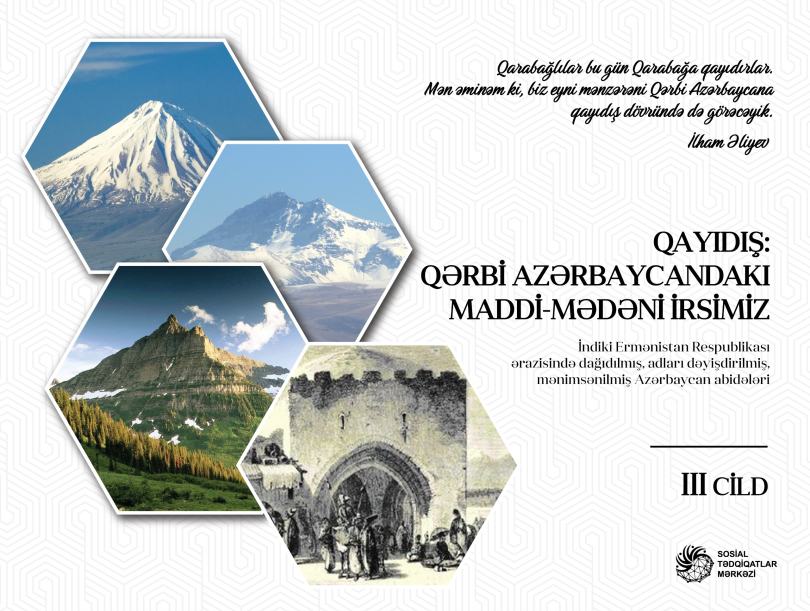Material and Cultural Heritage in Historical Lands of Azerbaijan
 04.04.2025
04.04.2025


 04.04.2025
04.04.2025


It is worthy of sympathy to do the holy work of reminding the public and every one of the deportations of Western Azerbaijanis from their homelands, the material and cultural monuments they were forced to leave in the lands they lived in for centuries, and conveying information about the tragedies that happened to these monuments with reference to sources and documents. Researching and promoting this historical issue from a socio-political, national-cultural, and scientific point of view is to fill a long-standing gap in our historiography related to the issues of national self-awareness, national historical awareness, national identity and national-cultural heritage, as well as a it is important from the point of view of eliminating controversial issues, the answers of which are not very clear.

While flipping through the book, our ancient and rich material and cultural heritage in historical lands gives us a sense of pride, but when we read the words "destroyed by Armenians", "ruined", "erased from the face of the earth" related to their fate, we should not be morally tensed, it is impossible not to be angry at Armenian vandalism.
The book is of great importance from the point of view of research and promotion of the countless material and cultural heritage in the modern Armenian territory of Western Azerbaijan, which is an important part of the historical lands of Azerbaijan and is of particular importance due to its strategic and geographical location. The author approached it very responsibly, researched serious sources and documents and wrote a book based on scientific principles. The grouping of monuments made the book easier to use.
In the book, which contains information about 244 hitherto little-known historical monuments, informative materials presented in various sections are presented specifically and concisely. It reflects the history, classification, type, significance, current state of the monuments and brief information about them - facts about the description, size and history of the monument. One of the factors that increases the value of the book is the rich bibliography. Each fact based on reliable sources enhances the scientific status of the book. Considering that historical and scientific research on the monuments is still scarce, the book takes the initiative to open the way to questions that are important for future research. I think that even in the future, translating the book into other languages and publishing it should be one of the priorities.
The printing of the book, which contains detailed information about these historical monuments, where our people have lived for centuries, culturally, politically, and spiritually, is an important and important character. It should never be forgotten as the most sacred duty not to let this heritage disappear, to bring it to the attention of every new generation and the world.
There is no doubt that this book, published as a project of the Social Research Center, is very useful, necessary and relevant. I congratulate the author for this sacred work, who prepared encyclopedic information about each monument in the book, covering a large list, and conveying their importance and current status. I would like to thank the entire editorial team for once again involving the historical and cultural heritage of our people in research by publishing this worthy and timely book.